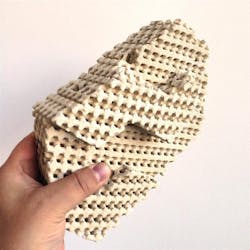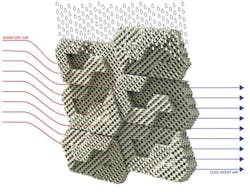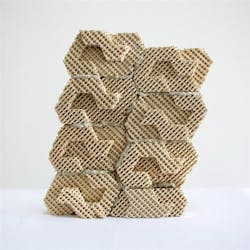3D-printed 'cool brick' may provide cooling solution for arid locations
In desert climates, extreme heat and dry air are not just uncomfortable, they can be life-threatening. Virginia San Fratello and Ronald Rael of The Emerging Objects Corporation may have found a natural cooling solution for increased safety and comfort in arid areas.
Evaporative cooling is the process of adding water to the air, causing the temperature to drop, and increasing the moisture in the air, 3ders reports. The technique itself is ancient, but San Fratello and Rael have applied it to a 3D-printed brick prototype, called Cool Brick.
The prototype was inspired by the Muscatese Evaporative cooling window, a system that combines a wood screen and a ceramic vessel filled with water. The Cool Brick is made of porous ceramic bricks set in mortar. The bricks absorb water and are designed as 3D lattices that allow air to pass through the wall.
The water held in the micropores of the ceramic bricks evaporates as air moves through the system, bringing cool air into the building interior. This process results in cool, moist air while using less energy than other cooling techniques.
The Cool Bricks are modular and interlocking, meaning that they can be assembled as needed for the particular space where they’re installed. The lattice structure creates a tight bond when set in mortar. Meanwhile, the shape of the brick creates a shaded surface on the wall, keeping that portion of the wall cool.
The Cool Brick can be viewed at Data Clay: Digital Strategies for Parsing the Earth until April 19, 2015, at the San Francisco Museum of Craft and Design. Tehton 3D, a 3D printing company that specializes in custom applications for ceramic 3D printing, sponsored the project.



